With a belief that many of the most memorable bikepacking trips have the most challenging hike-a-bikes, Miles reflects on his experience riding and pushing his bike alongside RJ Sauer in the South Chilcotin Mountains of British Columbia. Find that, plus his highly scientific new hike-a-bike classification system here…
Additional photos by RJ Sauer (@rjsauer)
When someone mentions bikepacking on the Sunshine Coast, South Chilcotin Mountains, or British Columbia for that matter, Skyler Des Roches comes to mind. Those familiar with bikepacking in western Canada have likely come across his contributions, and for good reason. He’s responsible for some of the most incredible bikepacking routes in Canada, played a major role designing and producing innovative products with Porcelain Rocket, and is the kind of person I’m happy to call a friend. Although I secretly hoped my first South Chilcotin Mountains experience would be shared with Skyler, when RJ Sauer pitched the idea of a last minute bikepacking trip—I couldn’t resist.
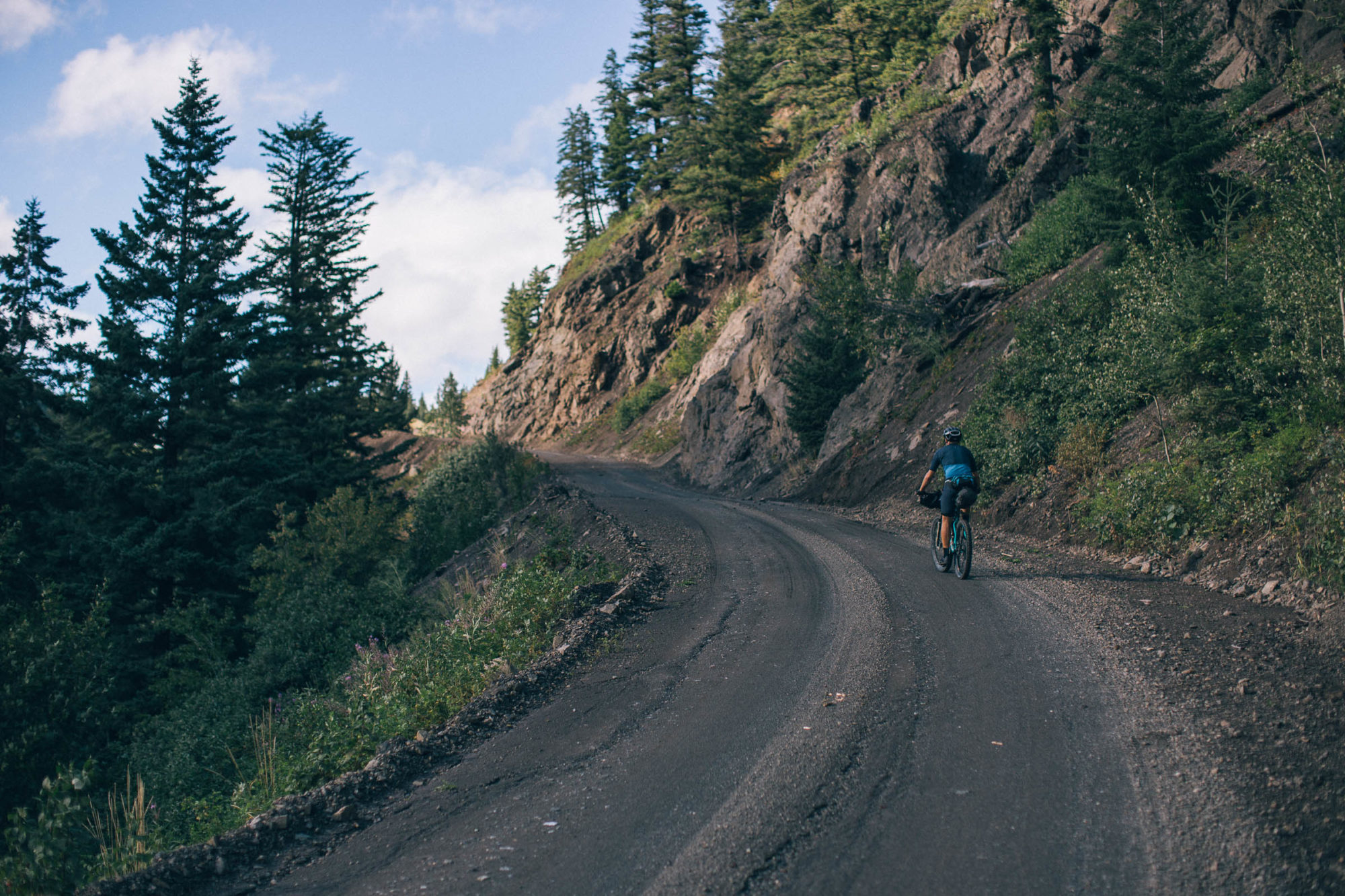
After a few text conversations, I think we were both confident that we wanted the same thing from the trip:
Ride as much as possible. It’s not a race. Maximize time on flowy, high-alpine singletrack. Take lots of photos.
The backbone of any healthy relationship, really.
Dates were set, dehydrated mashed potatoes were bought, and soon thereafter RJ and I were pedaling north on Tyaughton Lake Road, away from Tyax Lodge—giddy at the thought of sub-alpine ridges, glacier-fed lakes, and some good ol’ fashioned bike-pushing.
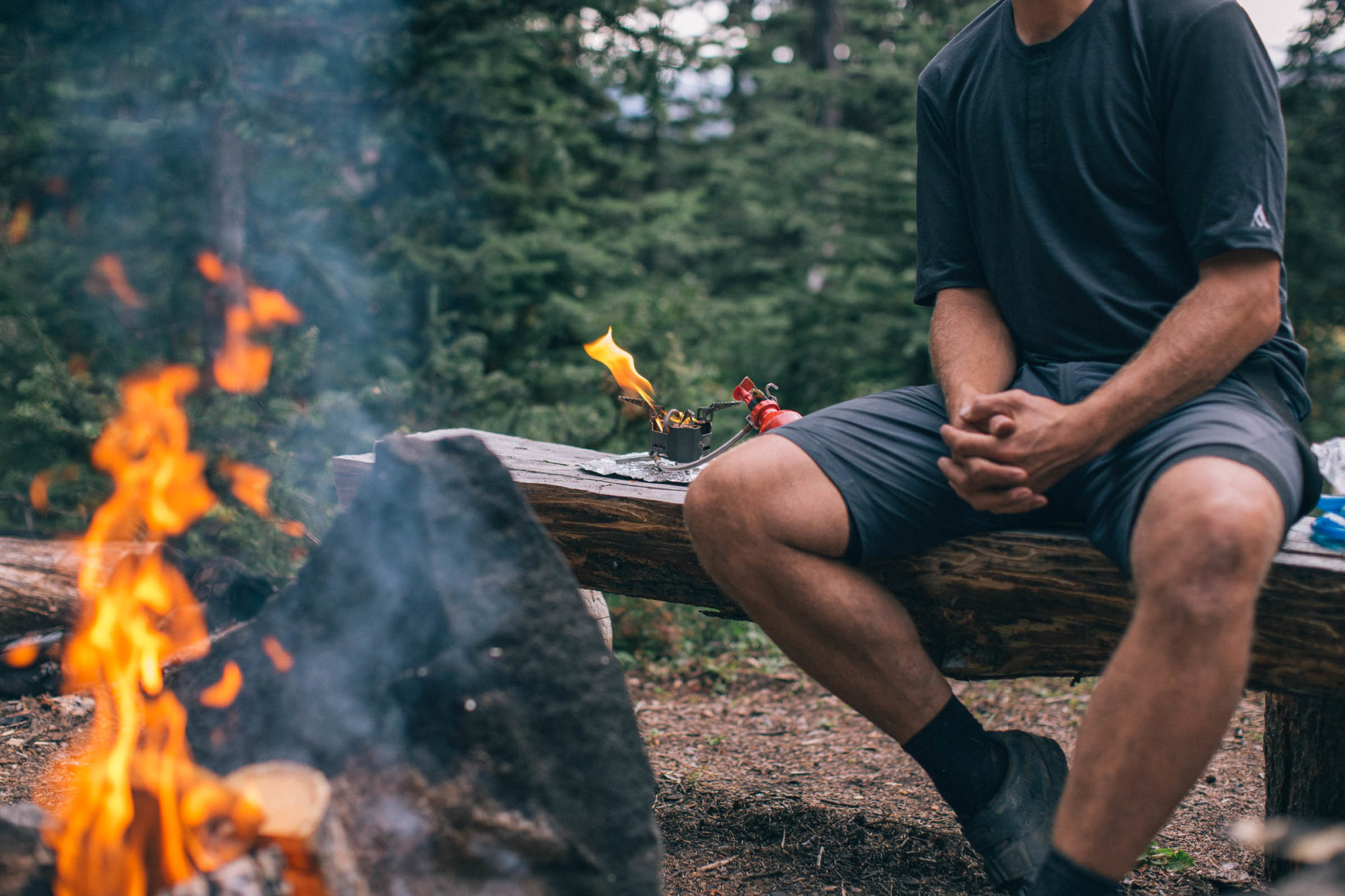
The Best of the South Chilcotin Mountains is a 121-kilometre bikepacking route within South Chilcotin Mountains Provincial Park. It’s characterized by rolling meadows, exposed alpine singletrack, and some of the most glorious descents in British Columbia—complete with a smattering of rough, remote trails, hike-a-bike, and over 9,000 feet of elevation gain. This would be both RJ’s and my first time bikepacking in the Chilcotin Mountains, and we had a clear understanding on how challenging it would be. Although I don’t think either of us expected to be hootin’ and hollerin’ as much as we did, even if it was more for the bears than anything else.
I’ve come to accept bike-pushing as a necessary component of bikepacking, often leading to the most spectacular views and trails, not to mention the pride in knowing just how much effort was needed to get to point B. The thing about the Chilcotin Mountains is that nearly every hike-a-bike was sandwiched between fantastic singletrack, and although the way up was often steep and unforgiving, it was nearly always quickly forgotten.
CLASS 1: POWER WALKING
The majority of these hikes were what I’m labeling as Class 1, roughly equating to a green walking trail or tame river that’s more or less a relaxing float. Trails that calibre would be totally rideable on an unloaded mountain bike, but after a day or two of riding heavy bikes up and over steep mountain passes, it wasn’t going to happen. There’s not a lot to say about Class 1 hike-a-bikes. They have more of an effect on your ego than anything else. In the Chilcotin Mountains, these came in the form of short creek crossings, rutted out trails, and sections of muddy bogs that were better suited to horses than camera-wielding cyclists.
Class 1 hike-a-bikes are everywhere. They are in your local trail system, your backroads, and reveal themselves to you quickly and without warning. They’re the type of friend that is equally unpredictable as they are reliable, and great to have around, even when they rub you the wrong way. Maybe it’s a steep descent that isn’t quite worth the risk or a particularly sandy section of trail that’s been obliterated from various multi-use traffic of the years. In their own way, they’re actually kind of nice.
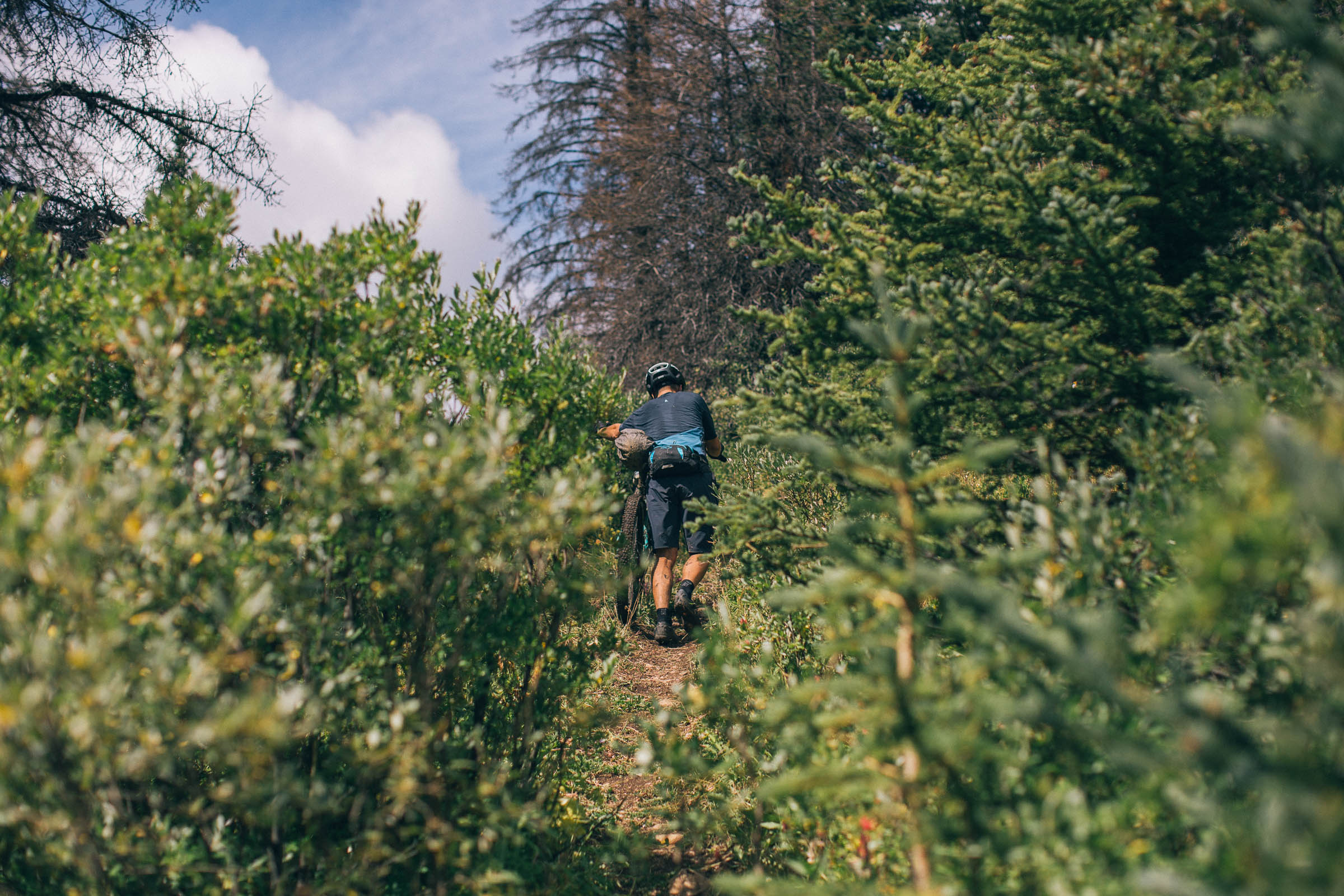
RJ and I would continue chatting away, commenting on how perfect the grizzly bear habitat was in the valley we just entered, and half-heartedly attempt to remount our bikes when things levelled out. We slowed down, filtered water from idyllic streams surrounded by wildflowers, snacked often, and kept moving forward.
Class 1 hike-a-bikes serve as fantastic natural breaks, perfect for snapping photos or catching your breath before whatever awaits around the bend. In our case, it was bigger passes, more singletrack, and lakeside campsites that were clearly in need of some company. We were happy to oblige.
Left foot, right foot. Oh! A flower!
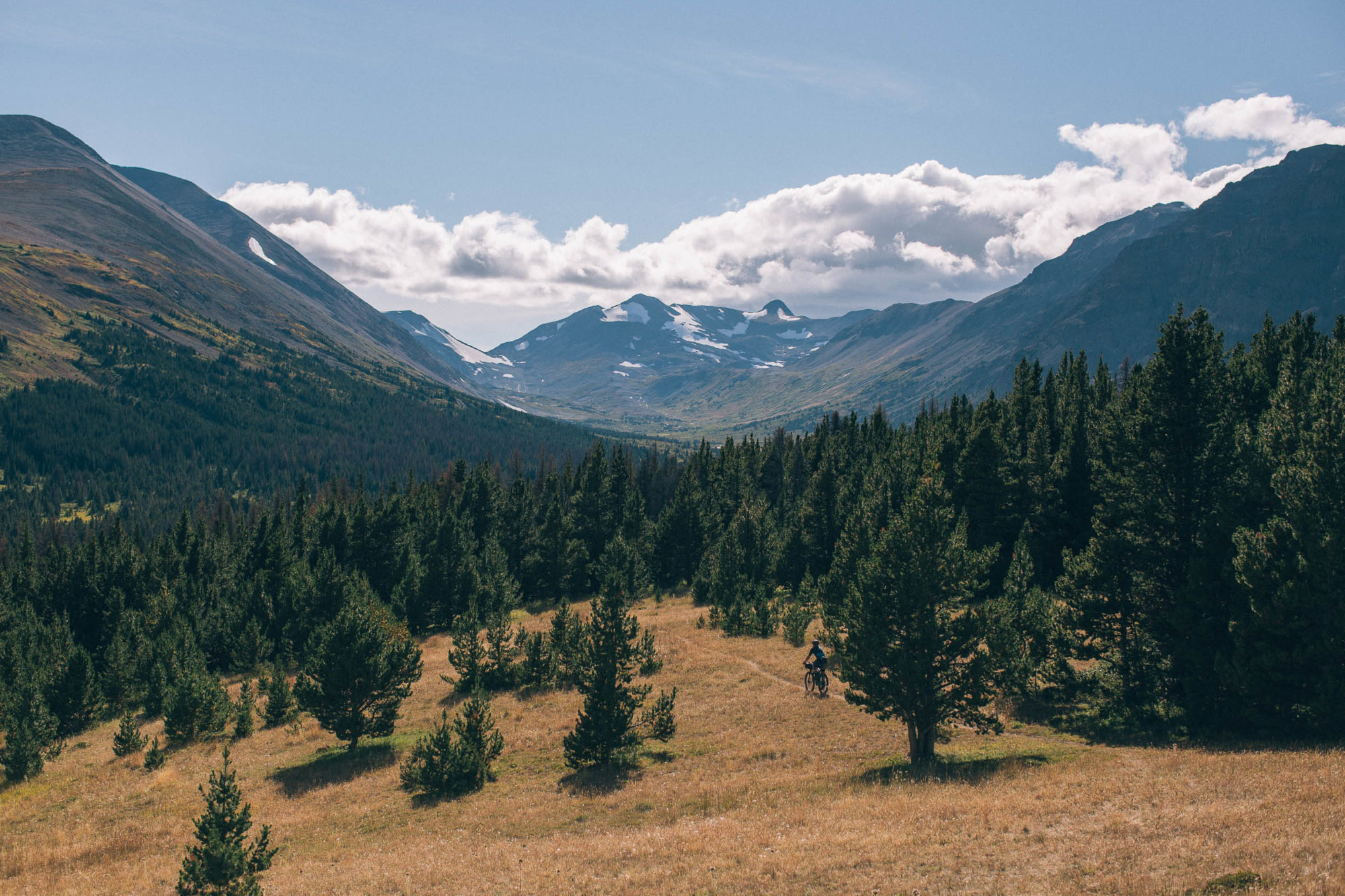
CLASS 2: THE SWEET SPOT
As we pushed further into the Chilcotin Mountains, somewhere around Lorna Lake, the terrain started to change in a big way. The transitions between low-lying valley floors and rocky, steep trails merged closer together. The size of the mountains surrounding us started to sink in. Lorna Pass Trail is about 1,000 feet high, spread out over just two kilometres, and sees a lot of two-wheeled traffic. Although small sections of the climb are rideable, the majority is hiking territory, and incredibly beautiful. The pass climbs up a steep valley, eventually skirting along the side of a scree slope packed down by hikers, bikers, and horseback riders looking to link Big Creek Park to South Chilcotin Mountains Park to the east.
RJ, a few hundred feet ahead of me, was snapping photos when we both heard the unmistakable sound of a Tyax Lodge float plane. We saw it for a split second, and just when we thought it was gone, the plane popped out from behind the uphill slope for a quick fly by—likely travelling from Lorna Lake back to the lodge.
“Hell yeah!” I called out, as RJ managed to get shots of the plane overhead with me on the scree slope below. Talk about perfect timing.
Hands on grips. Drive-side pedal forward. Stay close to the bike. Push.
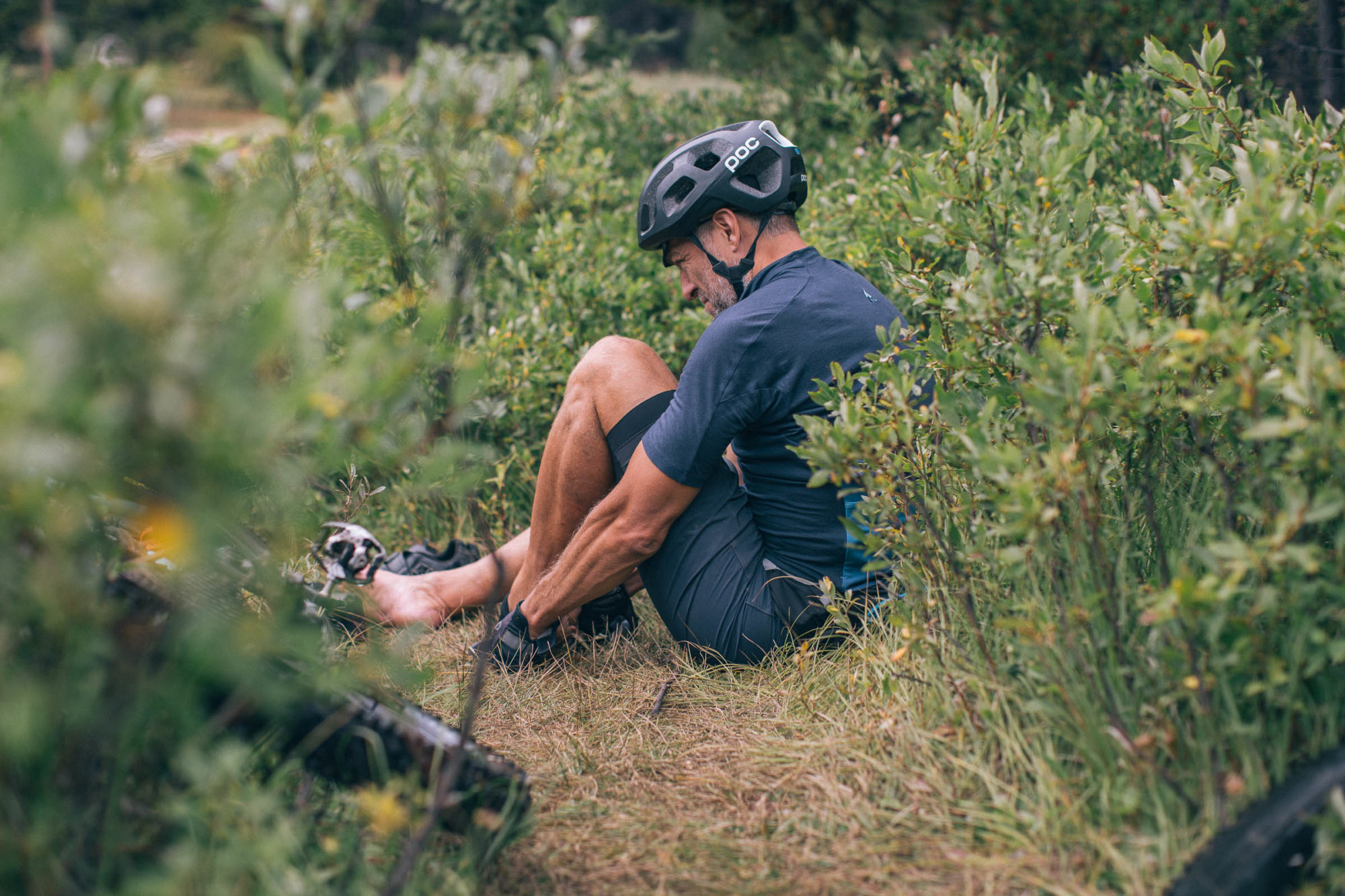
Class 2 hike-a-bikes require more focus and attention to your foot placement. Steep scree slopes can be exposed and intimidating, the trail faint and narrow in spots. Trying to balance a loaded bike against your hip while searching for a float plane in your viewfinder, teetering on a narrow, loose path, should likely be avoided. Although steep in sections, no fancy footwork or braking techniques are needed…yet.
CLASS 3: NO TURNING BACK
Every now and again you’ll see an elevation line or wall-like trail in front of you that is clearly a gateway to heaven. The feeling of this might suck and bittersweet anticipation is all too familiar to RJ and I. These types of trails may be more gracefully scaled with ropes and harnesses, but of course we must make use of what we have. Hydraulic brakes assist us in maintaining our ground, slowing our bike’s temptation to roll backwards. Precision foot placement avoids slippery roots and uneven terrain, taking advantage of every natural foot or hand hold in sight. Grades steep enough for you to consider selling your bike, waiting out the rest of the season, and taking up downhill skiing instead.
Push, brake, pull, repeat.
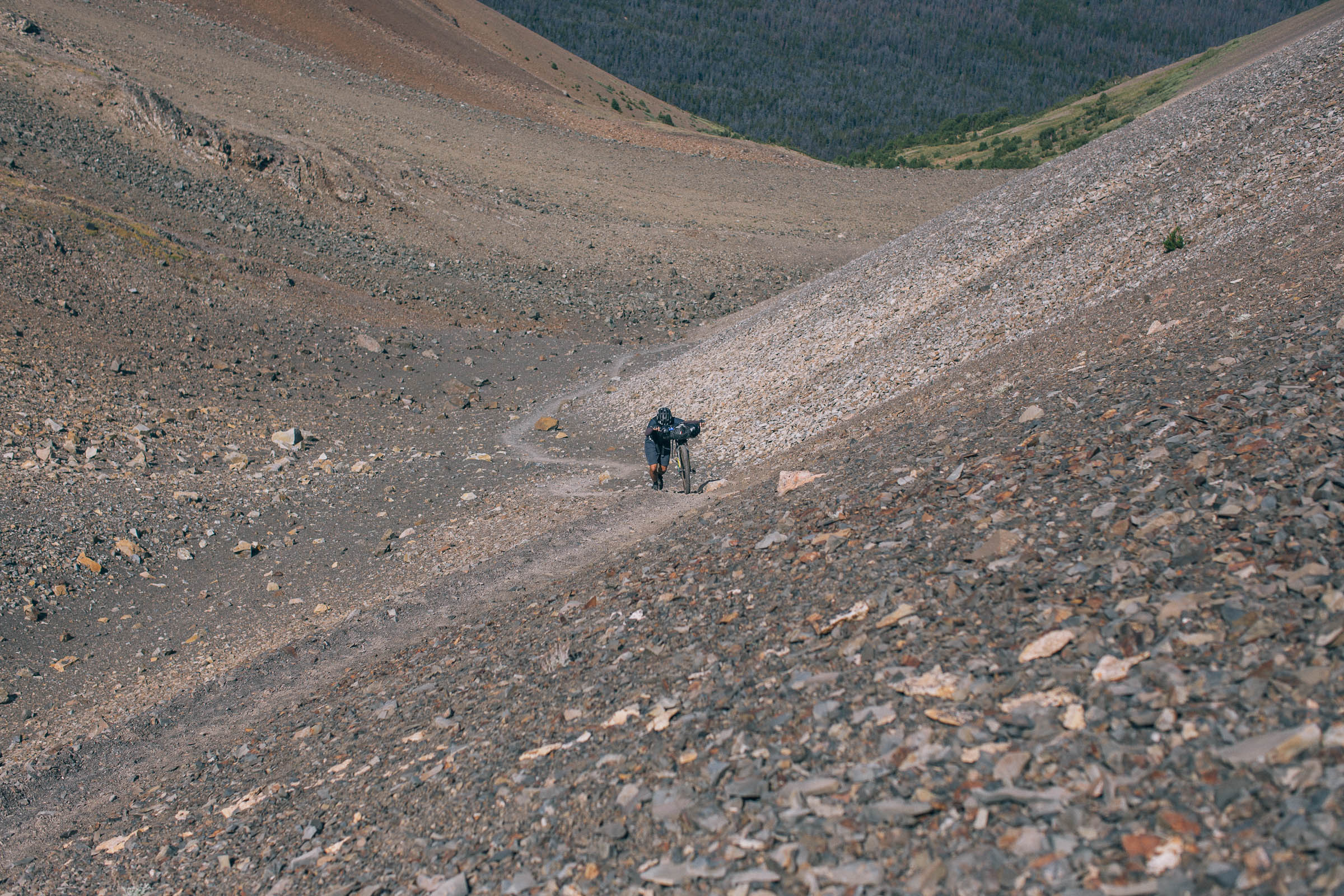
Although the South Chilcotin Mountains aren’t riddled with Class 3 hike-a-bikes, there were a few off-camber, uncomfortably exposed sections of trail too steep to ride, but passable nonetheless. With time on our side, we decided to venture off the standard route to tackle two additional passes along High Trail. This optional portion of the route had some of the most iconic views and impressively long singletrack descents that were well worth some extra walking.
At one point, RJ asked me, “Do you have a normal side of the bike to push from?”
“Yep, the right side. But I try to switch it up as much as possible.”
“Same.”
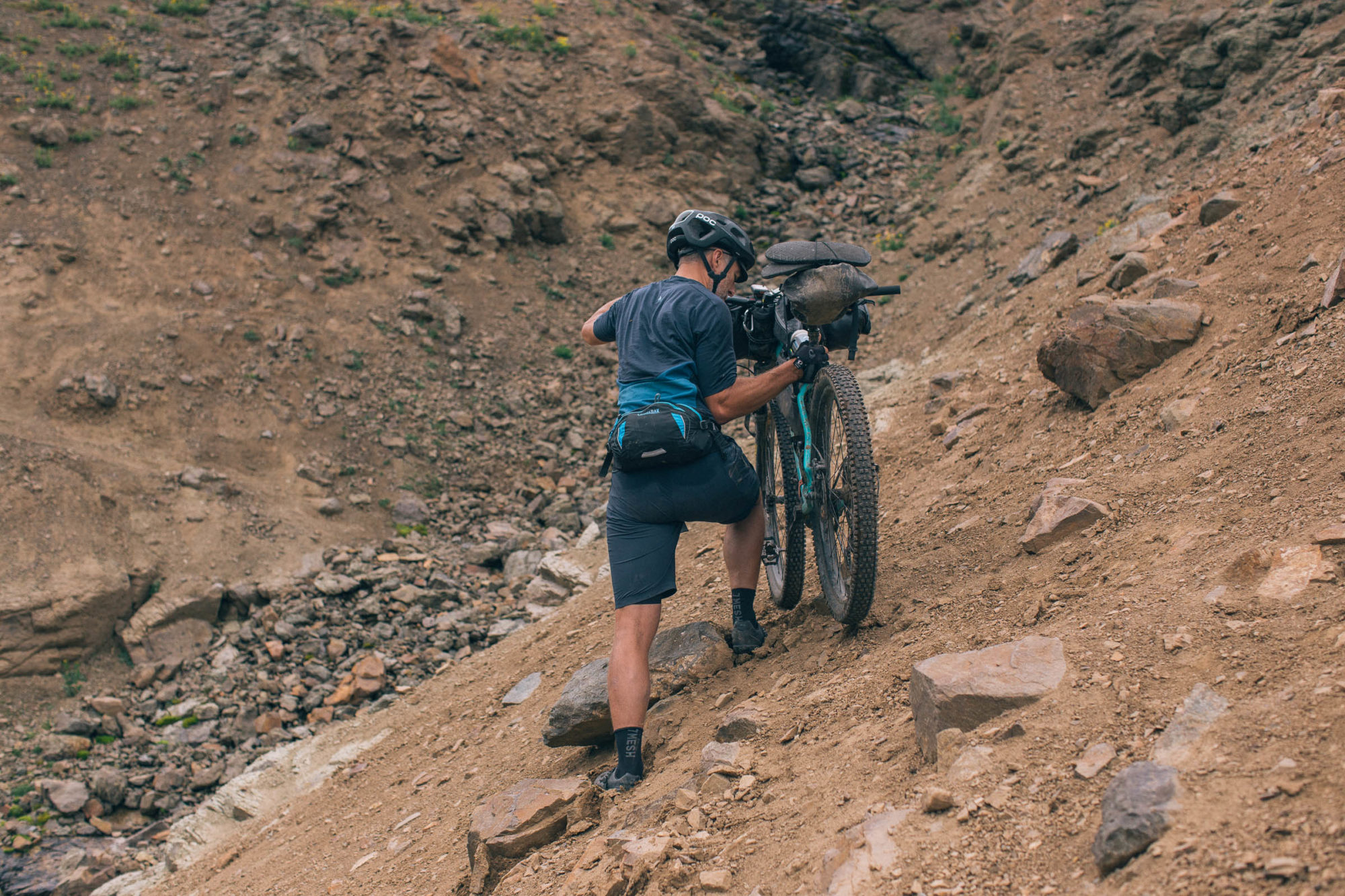
I enjoy finding myself in places where my pre-bikepacking self would wonder just how these fools got there in the first place and where on earth they were heading. As a sticker made by my friend Joe Cruz, stuck onto my top tube, reminds me, the fun starts when you stop having fun—and boy, that couldn’t be more true.
A pedal strike to the shin. Sunglasses fogging up. No end in sight. At least it isn’t raining.
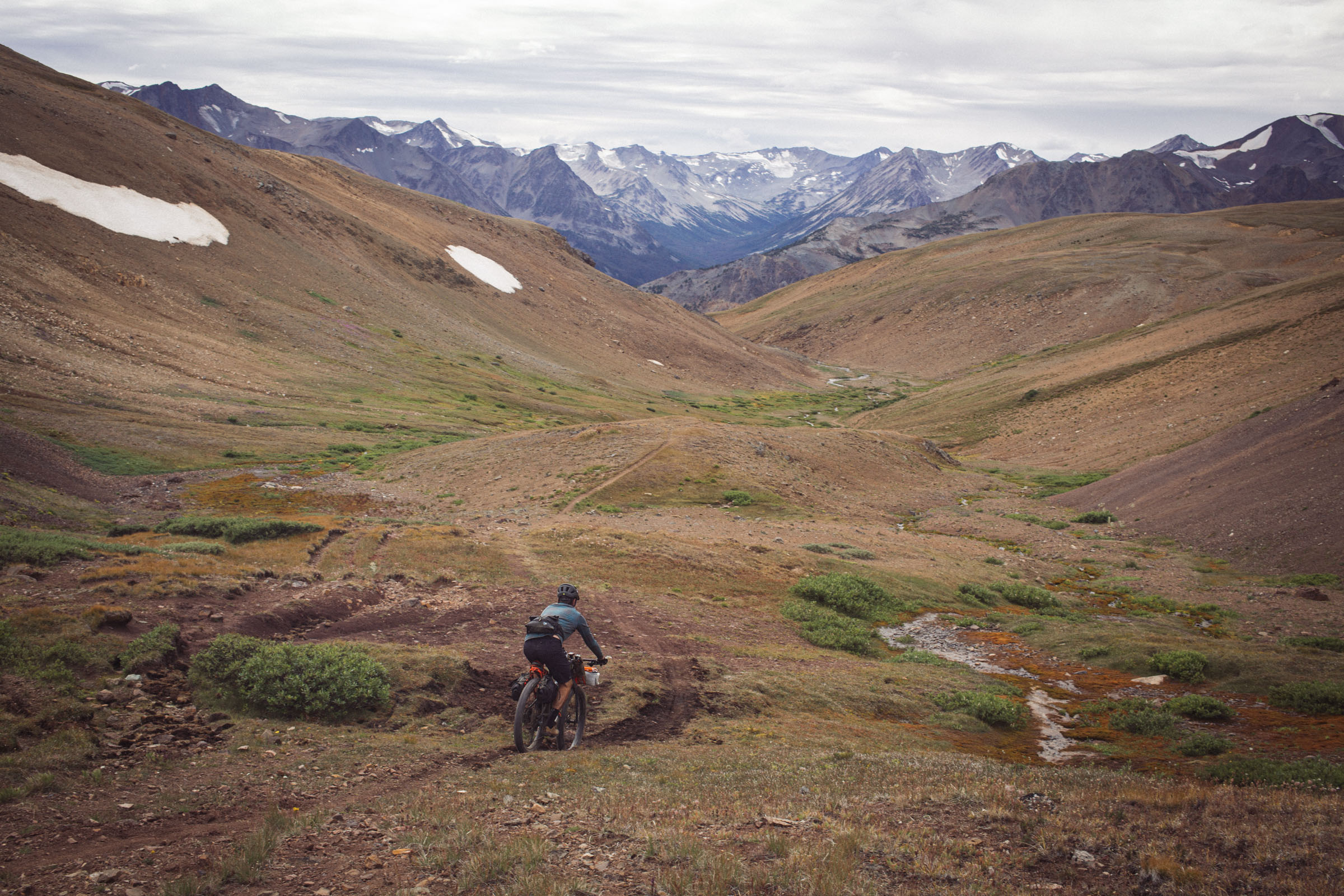
Want to learn more about this route? We’ve recently worked on a major update to the Best of the South Chilcotin Mountains bikepacking route, including more important details, points of interest, and an alternate route along High Trail for more epic descents… and hike-a-bikes.
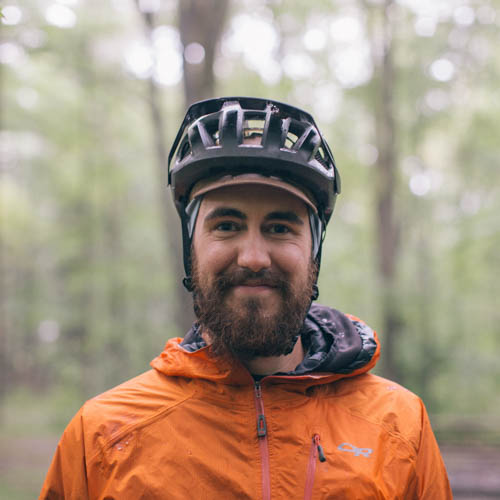
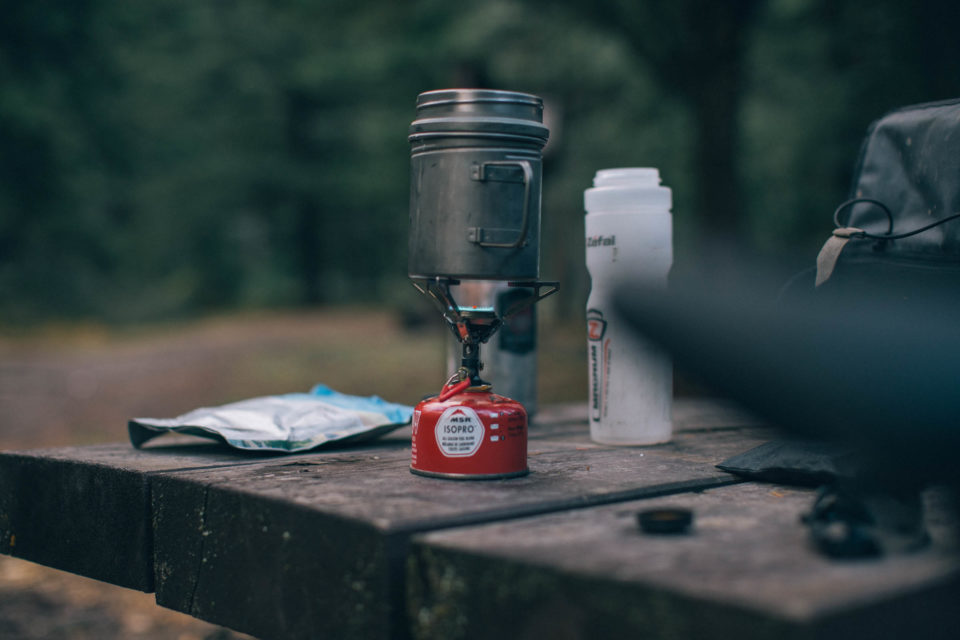
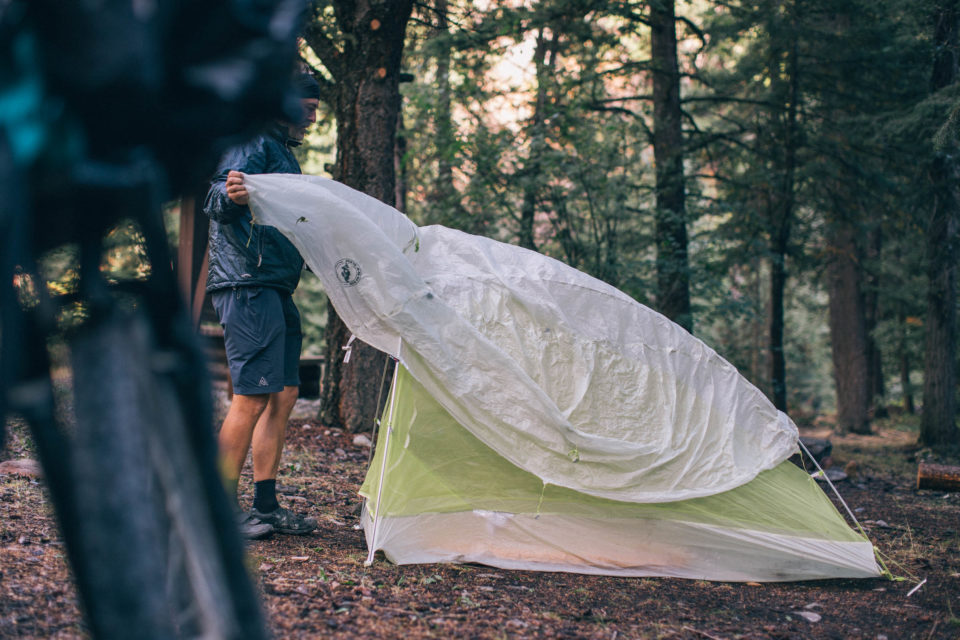
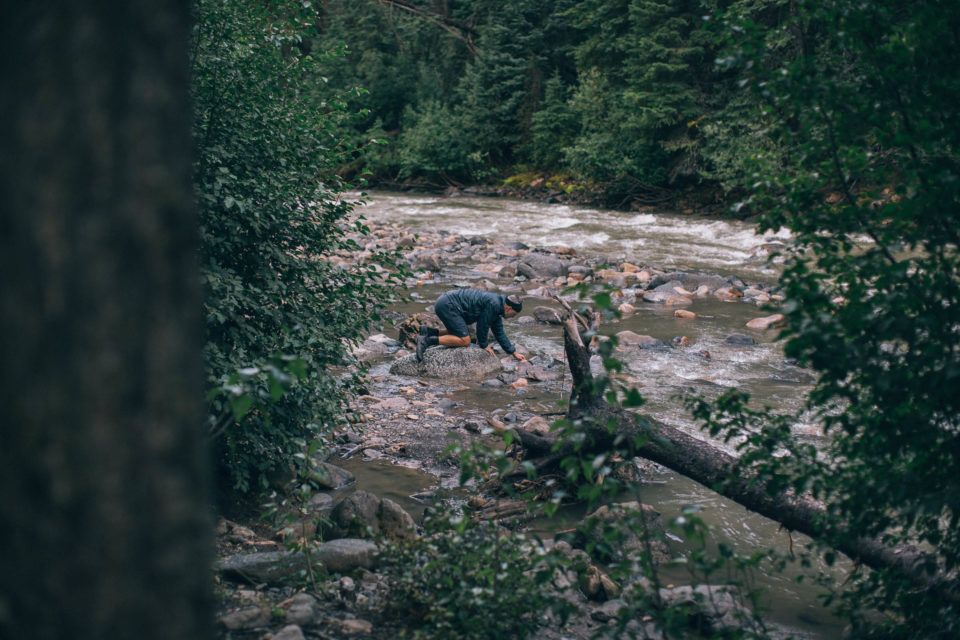
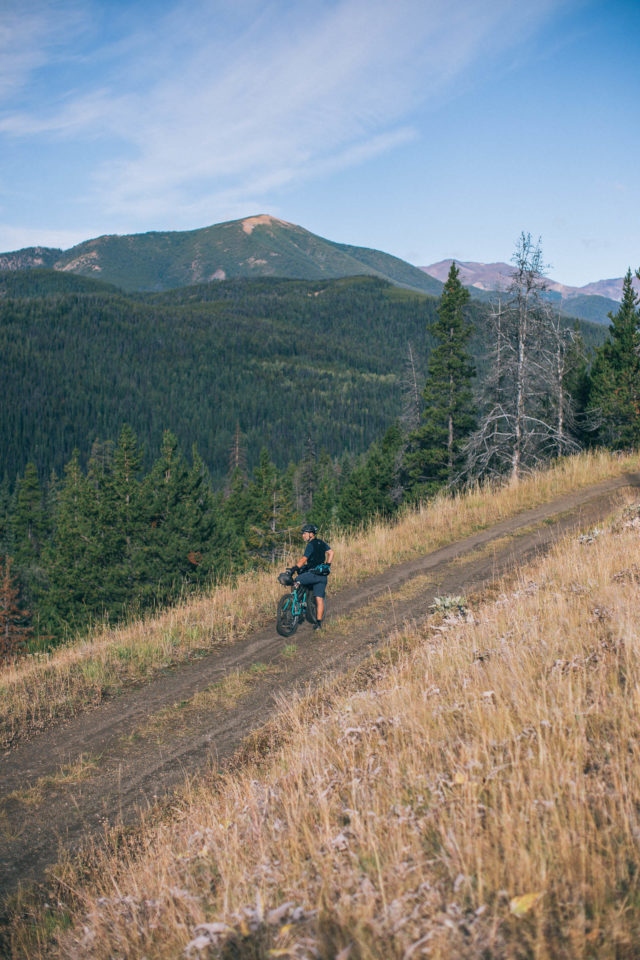
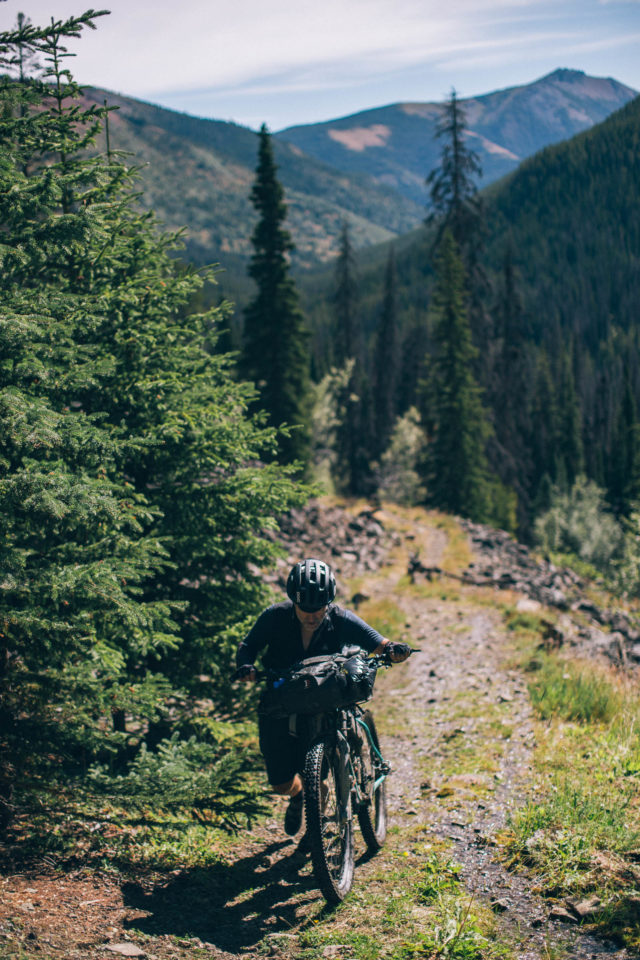
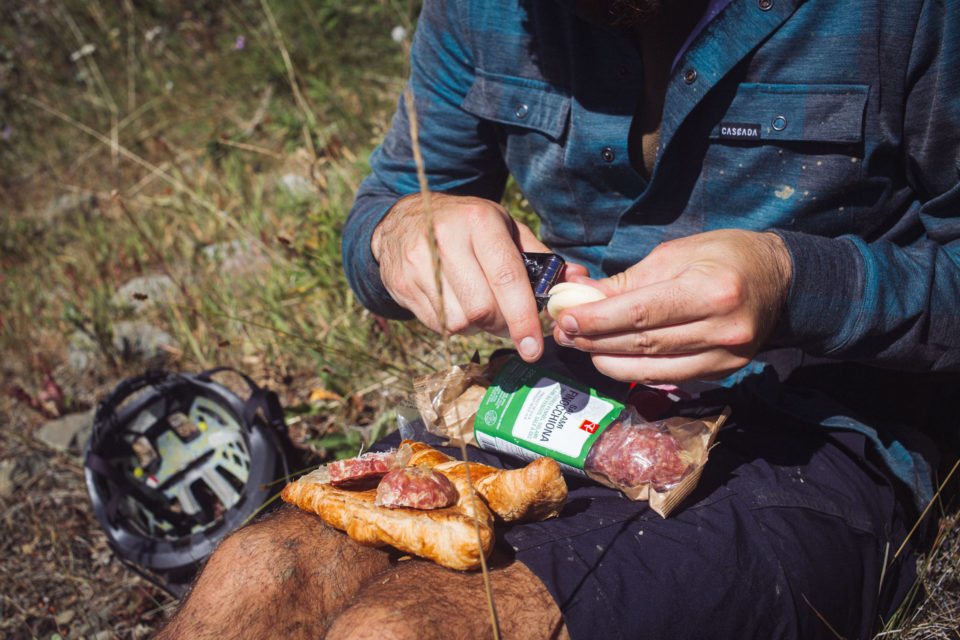
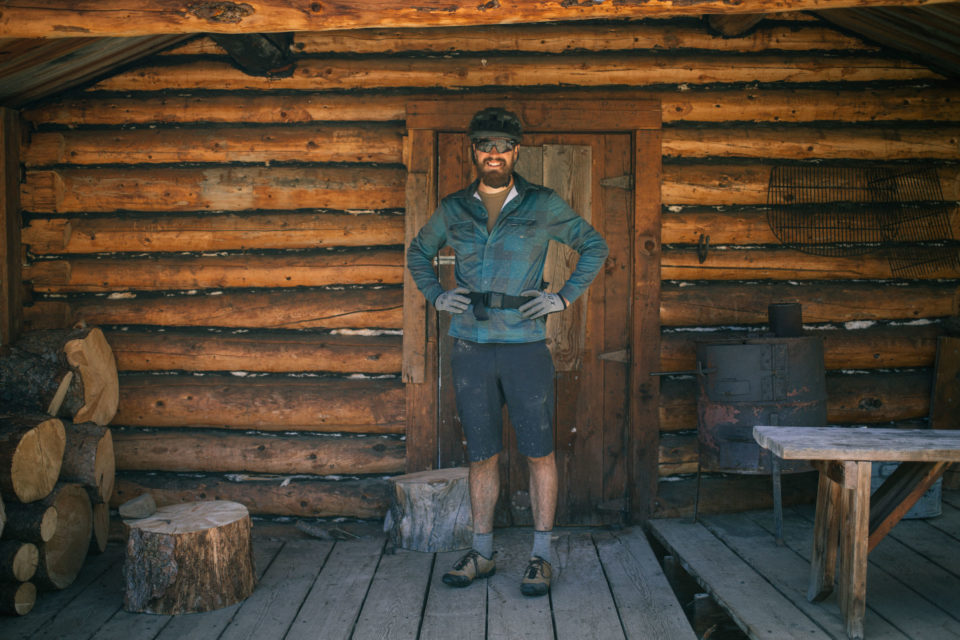
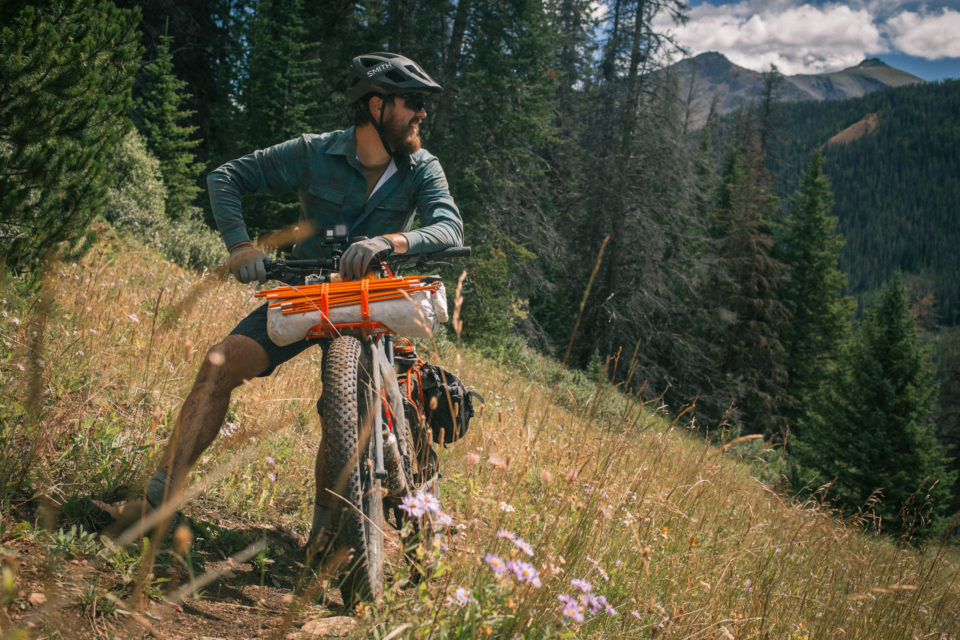
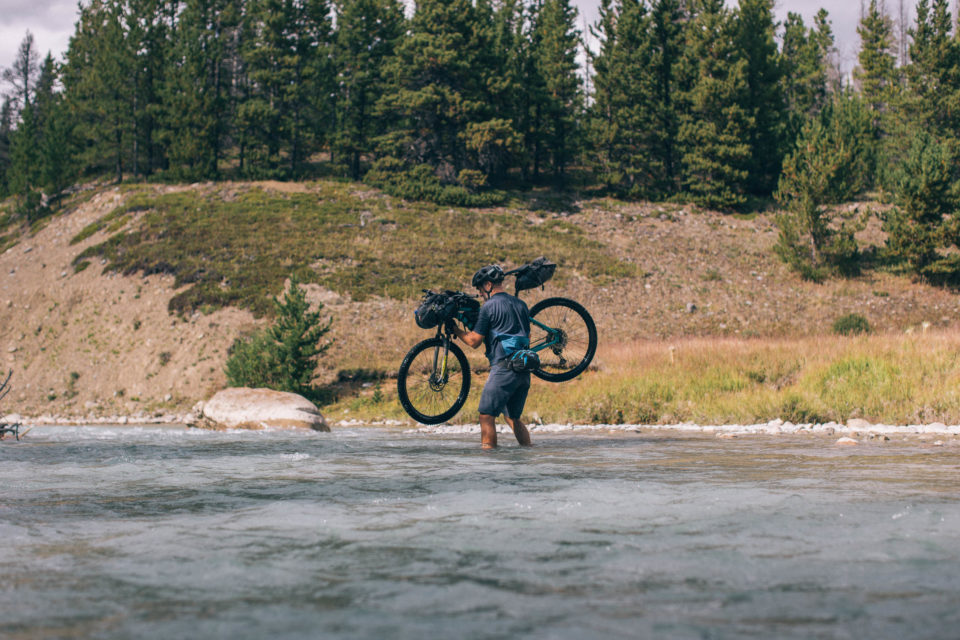
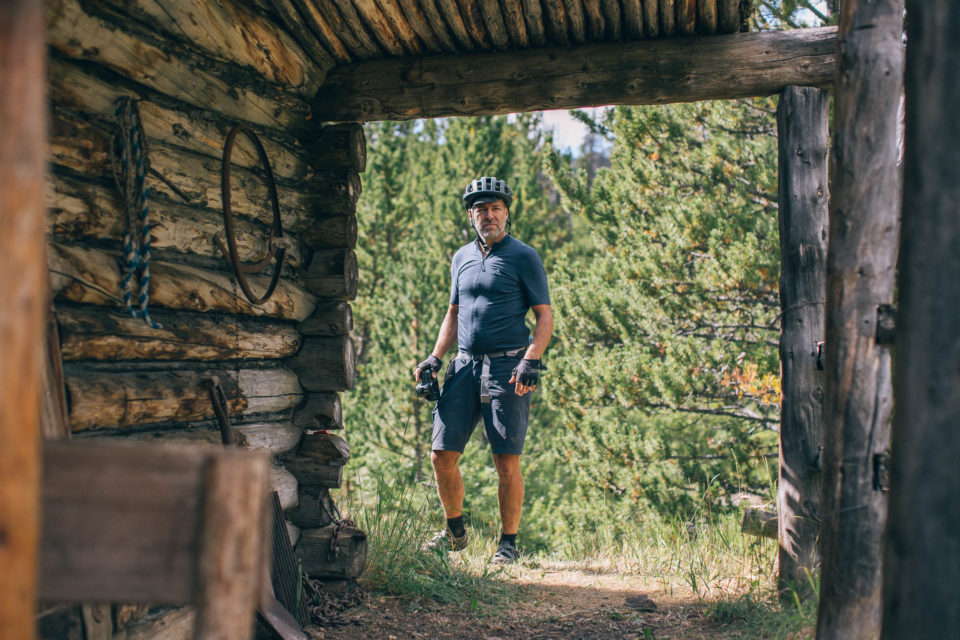
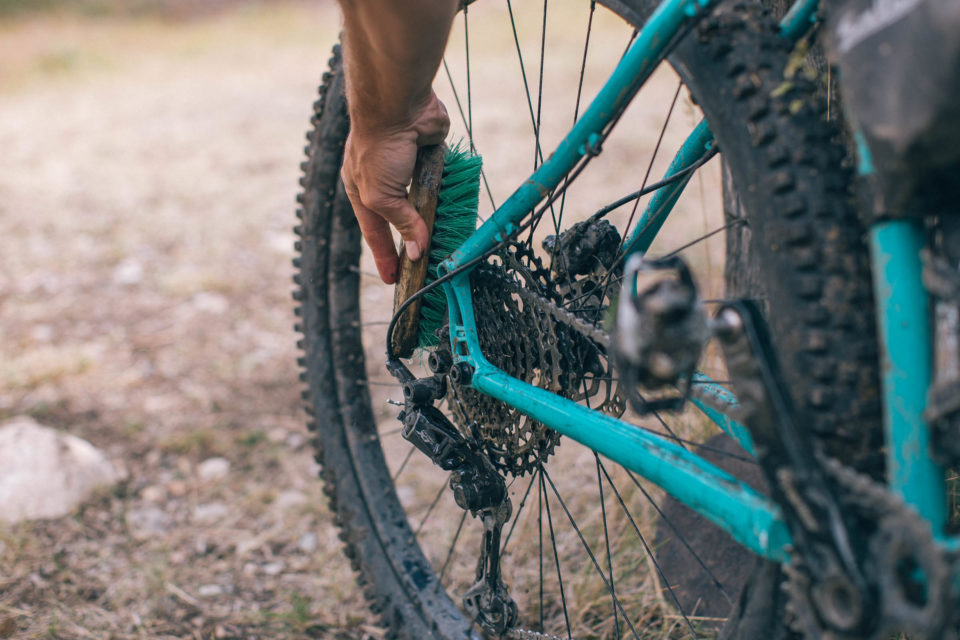
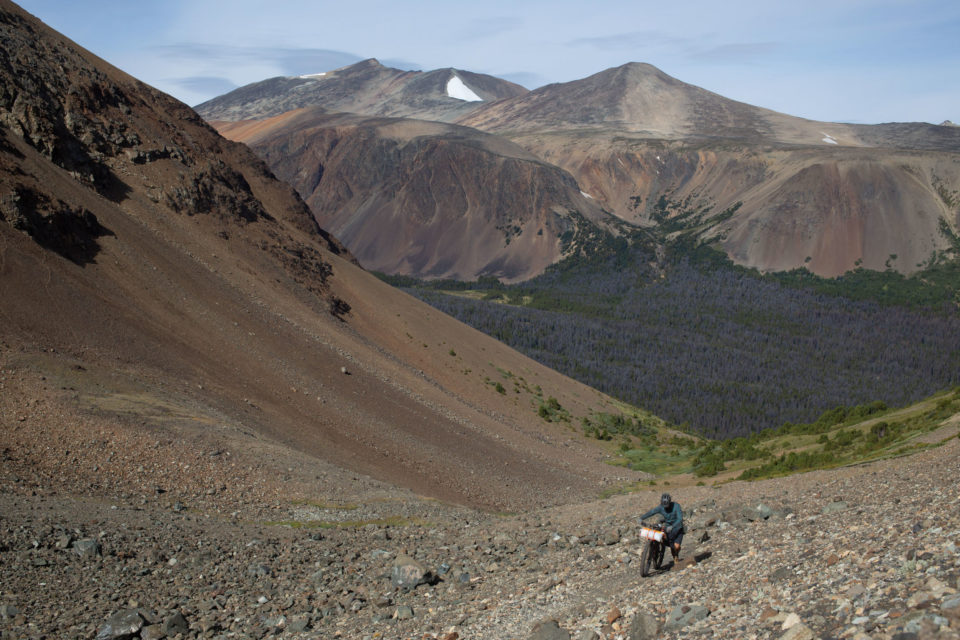
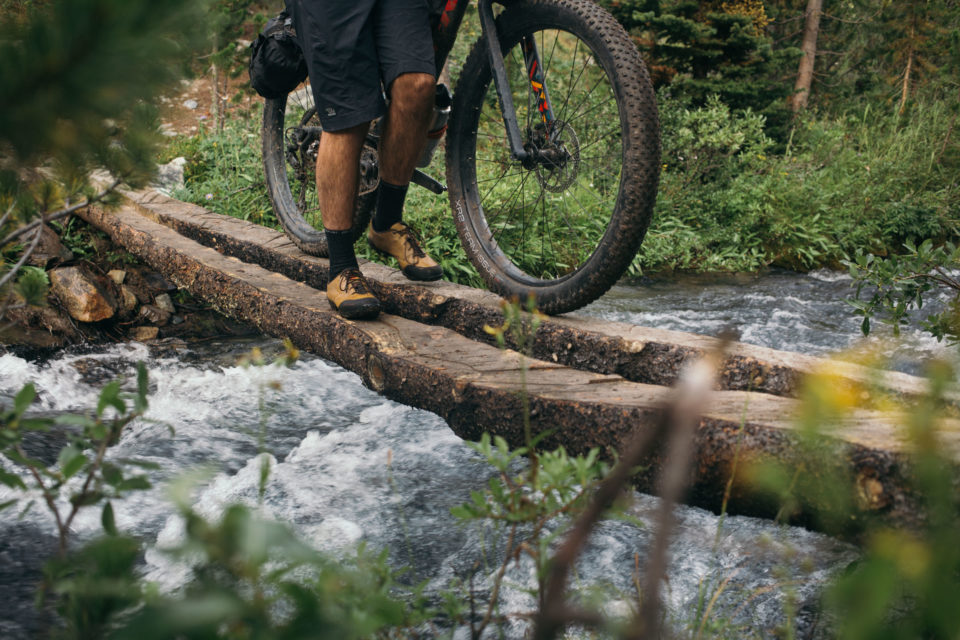
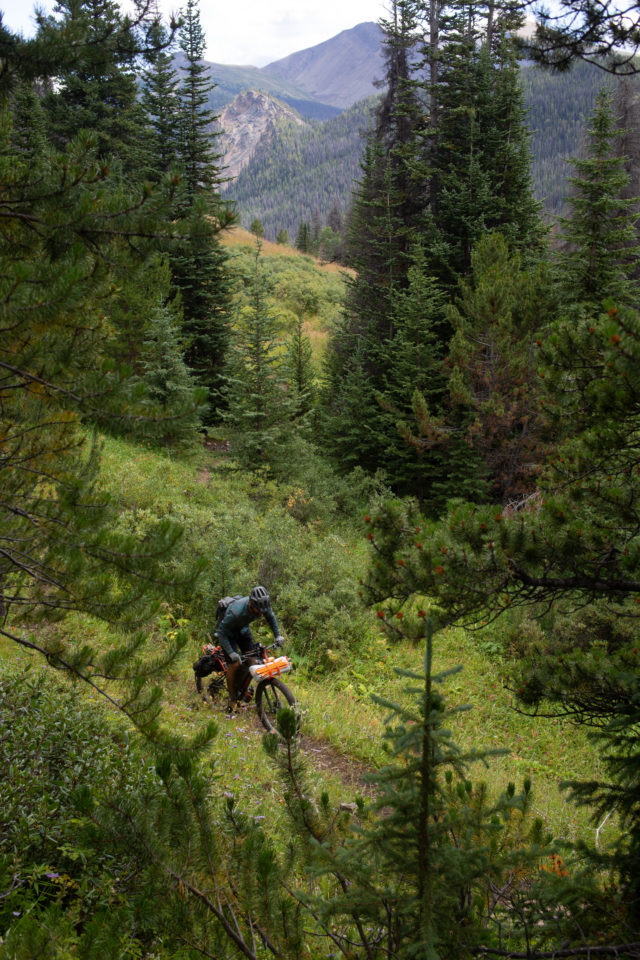
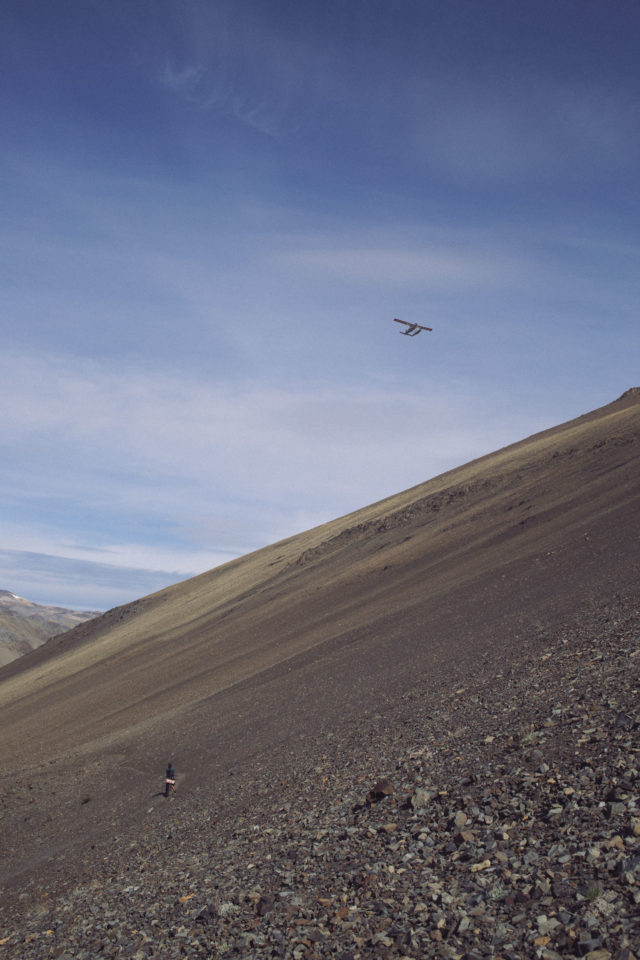
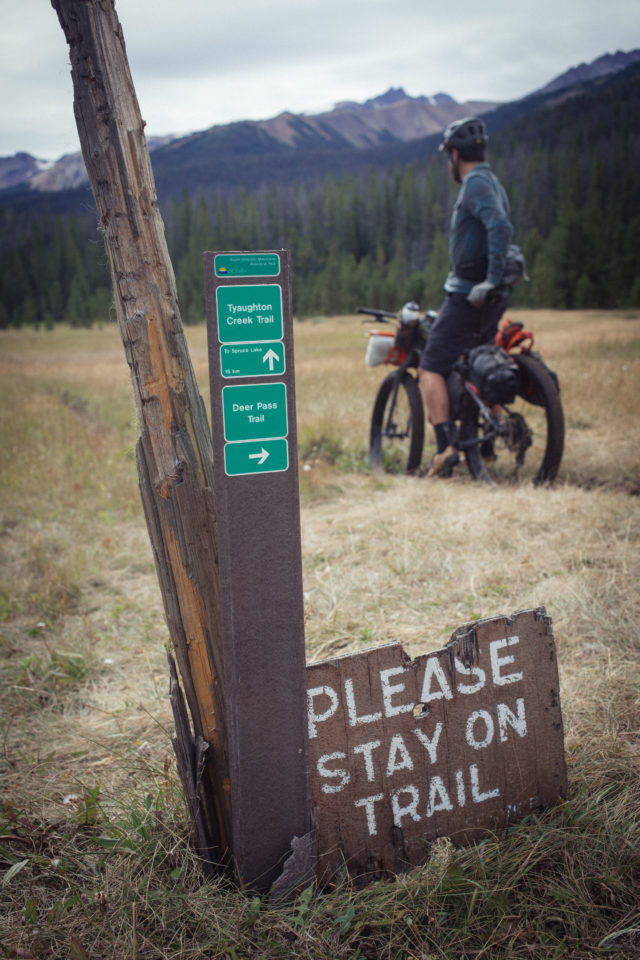
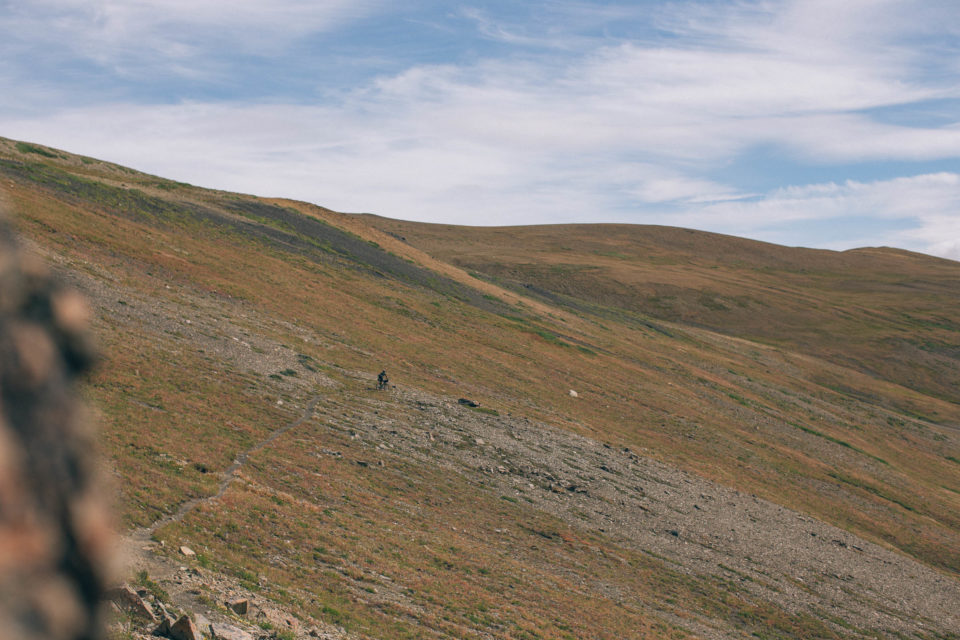
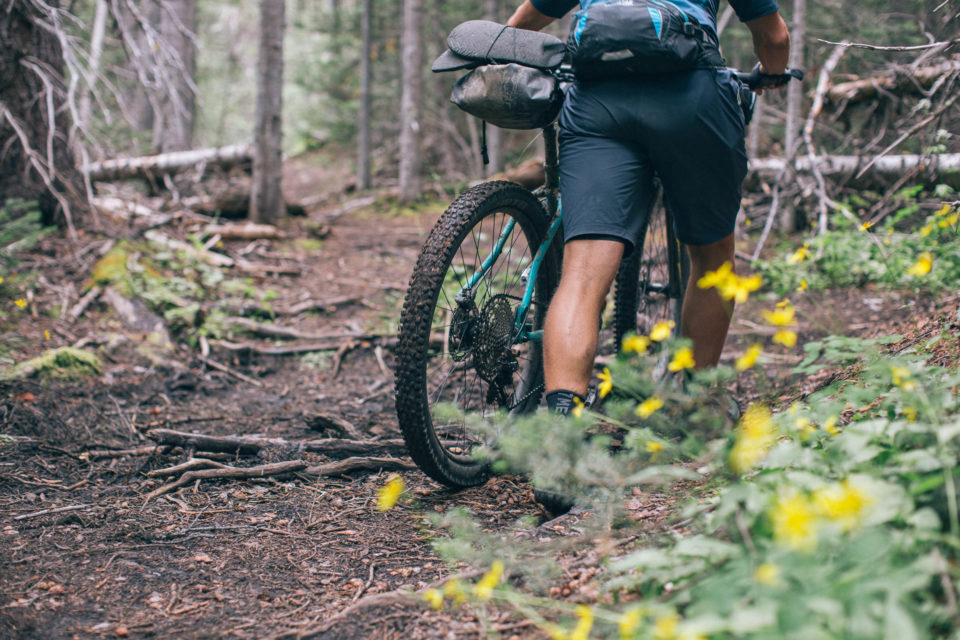
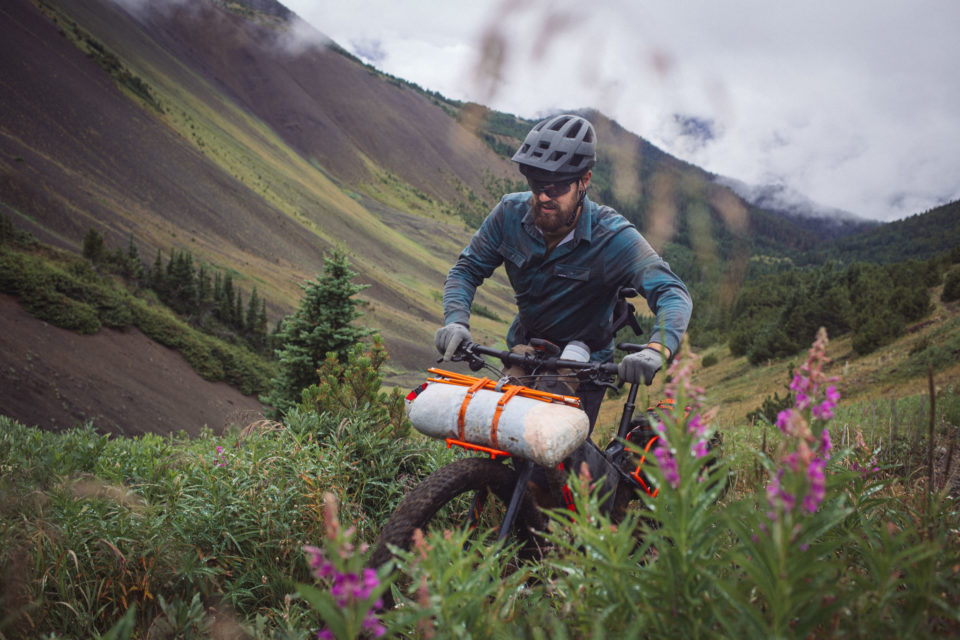
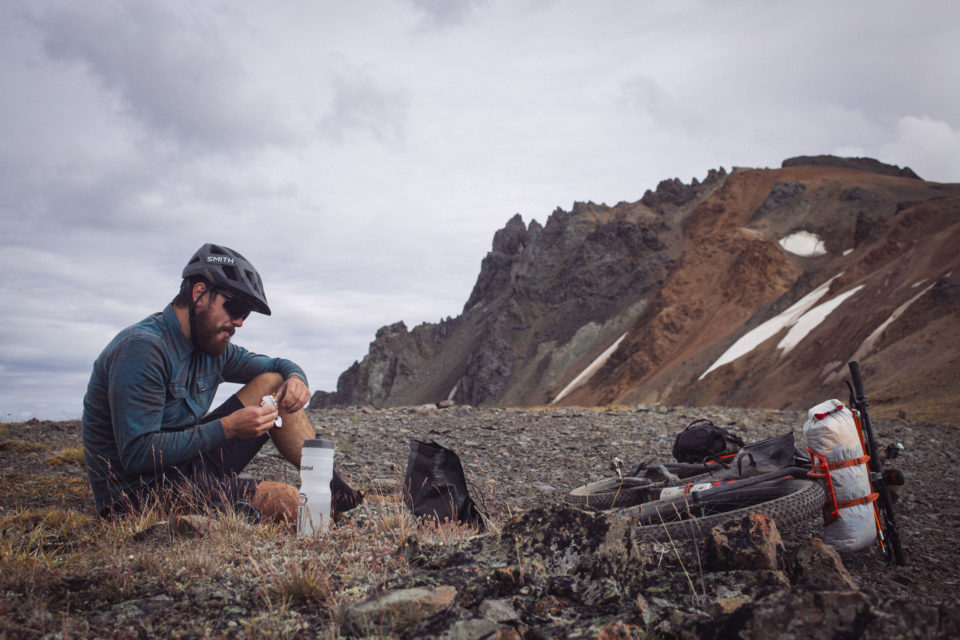
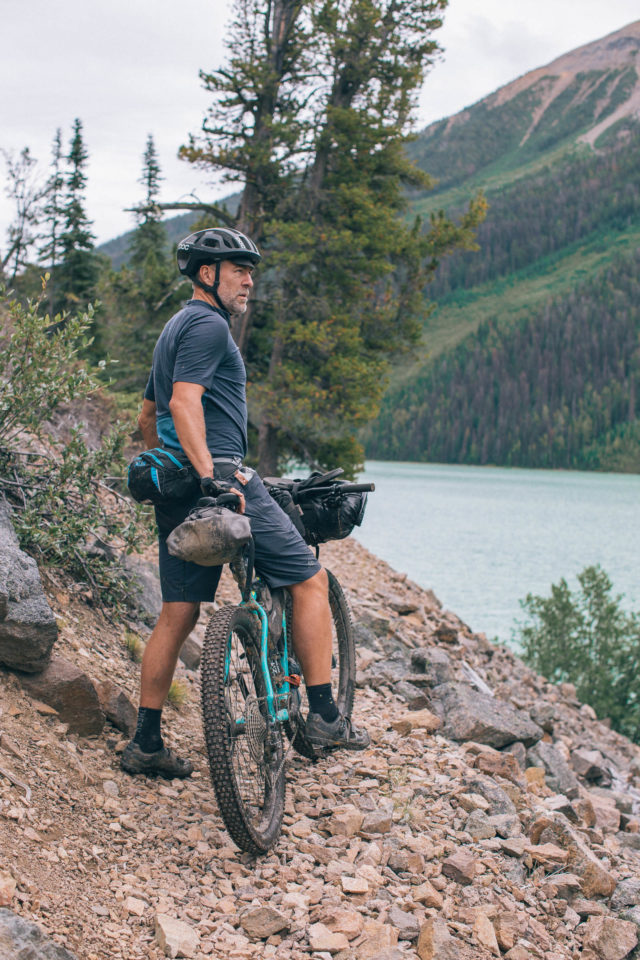
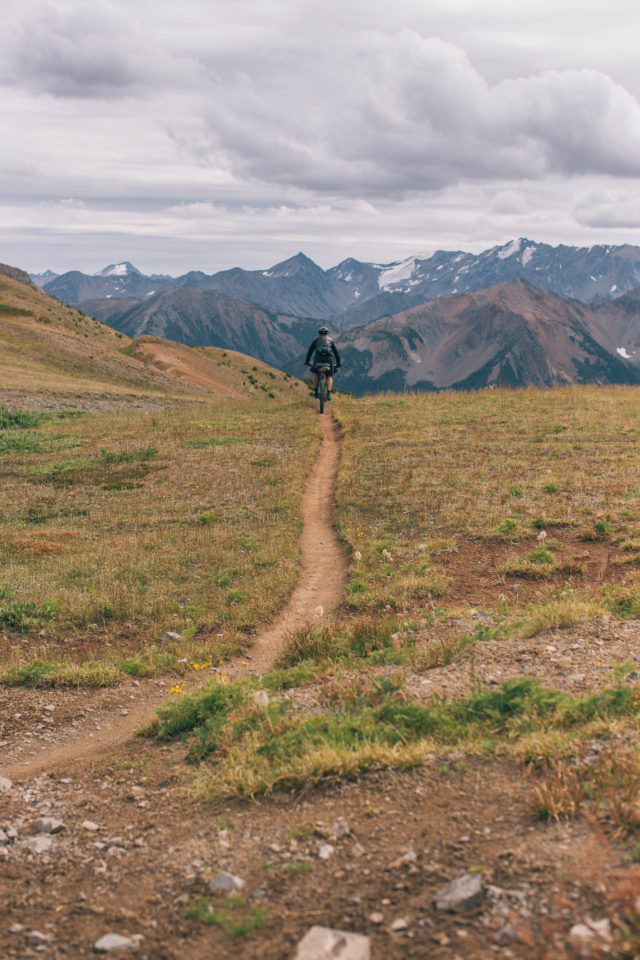
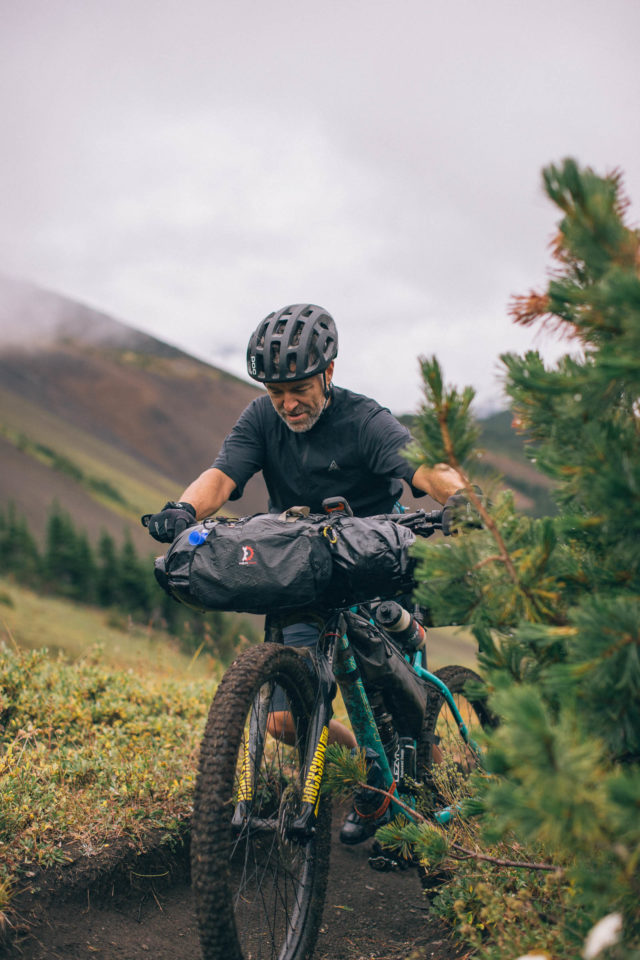
No comments:
Post a Comment